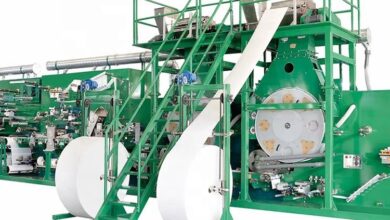Unveiling the Mechanics of Spur Gears: A Fundamental Component in Mechanical Power Transmission
Spur gears are the unsung heroes of mechanical power transmission, silently at work in countless machines around us. As one of the simplest and most common types of gears, spur gears play a crucial role in transferring rotational motion and power efficiently.
This article delves into the intricacies of spur gears, exploring their design, applications, advantages, and considerations in various engineering fields.
Understanding Spur Gears:
1. Basic Design:
Spur gears are cylindrical gears with teeth that project radially, perpendicular to the gear’s axis. The teeth of mating gears interlock and transfer motion through contact at their pitch circles. The pitch circle is an imaginary circle at the midpoint of the gear’s teeth, representing the effective radius for determining gear ratios.
2. Types of Spur Gears:
External Spur Gears: These gears have teeth on the outer surface of the cylindrical wheel.
Internal Spur Gears: In contrast, internal spur gears have teeth on the inner surface, providing a compact and space-saving design.
3. Applications:
Spur gears find applications in a wide range of machinery and mechanical systems, including:
Automotive Industry: Used in gearboxes, differentials, and other transmission systems.
Industrial Machinery: Found in conveyor systems, manufacturing equipment, and more.
Clocks and Watches: Utilized in clock mechanisms for precise timekeeping.
Electric Motors: Incorporated in gear reduction systems for torque multiplication.
Key Features and Advantages:
1. Simplicity and Efficiency:
Spur gears are straightforward in design, consisting of parallel shafts with teeth that mesh directly. This simplicity contributes to ease of manufacturing, maintenance, and cost-effectiveness. Additionally, spur gears are known for their high efficiency in power transmission.
2. Precise Speed Ratios:
The uniform teeth of spur gears facilitate precise speed ratios between the driving and driven gears. This makes them ideal for applications where accurate and predictable rotational speeds are critical.
3. Compact Arrangement:
Internal spur gears allow for a more compact arrangement of components, making them suitable for applications with limited space constraints.
Considerations and Challenges:
1. Noise and Vibration:
Spur gears can generate noise and vibration during operation, especially at high speeds. This is due to the sudden engagement and disengagement of gear teeth.
2. Axial Thrust:
The design of spur gears can result in axial thrust, which must be carefully managed to prevent excessive axial forces on the bearings.
3. Limited Contact Ratio:
The contact ratio, representing the number of teeth in contact at any given time, is relatively low in spur gears. This can lead to increased wear and a higher likelihood of backlash.
Conclusion:
Spur gears, with their simplicity, efficiency, and versatility, form the backbone of mechanical power transmission systems. Their widespread use across various industries underscores their reliability and effectiveness in converting rotational motion. Engineers continue to refine designs and address challenges associated with noise, vibration, and wear, ensuring that spur gears remain indispensable components in the machinery that powers our world. Learn more>



